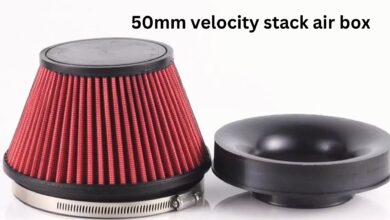Elevators, also known as lifts, are an essential part of modern buildings, helping people and goods move between floors efficiently. But have you ever wondered what makes a lift work? In this guide, we’ll explore the key lift parts, their functions, and why regular maintenance is crucial to keeping them in top shape.
Understanding Lift Parts: How Elevators Work
A lift consists of several important components that work together to ensure smooth and safe operation. These parts include mechanical, electrical, and safety systems. Below, we’ll break down the most essential lift parts and their roles.
Main Lift Parts and Their Functions
1. Elevator Car (Cabin)
The elevator car, or cabin, is the enclosed space where passengers or goods travel. It is designed for safety and comfort and comes in various sizes and styles depending on the building’s needs.
2. Hoistway (Lift Shaft)
The hoistway is the vertical passage where the lift moves up and down. It contains guide rails, cables, and other components that help the elevator function smoothly.
3. Traction System (Ropes and Pulleys)
In most modern elevators, steel ropes and pulleys lift and lower the cabin. This system helps distribute weight evenly, ensuring smooth movement.
4. Motor and Drive System
The motor provides the power needed to move the lift. In traction elevators, an electric motor turns the pulley system, while in hydraulic elevators, a hydraulic pump controls the movement.
5. Control System (Lift Controller)
The control system acts as the brain of the lift. It processes button commands, directs the motor, and ensures the lift stops at the correct floors.
6. Guide Rails
Guide rails keep the lift cabin moving in a straight line and prevent swaying. They are fixed inside the hoistway and are essential for a smooth ride.
7. Safety Brakes and Speed Governors
Safety is a top priority in lift systems. Speed governors detect excessive speed and activate emergency brakes to stop the cabin safely.
8. Doors and Door Operators
Lifts have two types of doors:
- Cabin doors (attached to the elevator car)
- Landing doors (stationary doors on each floor)
A door operator controls the opening and closing of these doors to ensure smooth entry and exit.
9. Counterweight
In traction elevators, a counterweight balances the elevator cabin’s weight. This reduces the motor’s energy consumption and improves efficiency.
10. Emergency Systems
Every lift has emergency systems to protect passengers, including:
- Emergency stop buttons
- Backup power supply
- Alarm systems
These features help ensure safety in case of power failures or mechanical issues.
Why Regular Maintenance of Lift Parts Is Important
Proper maintenance of lift parts is essential for safety, efficiency, and durability. Here’s why:
✔ Prevents breakdowns – Regular inspections help identify worn-out parts before they fail.
✔ Ensures passenger safety – Well-maintained lifts reduce the risk of sudden stops or malfunctions.
✔ Increases lifespan – Replacing or repairing parts on time extends the life of the lift.
✔ Improves efficiency – Clean and lubricated parts operate smoothly, saving energy.
FAQs About Lift Parts
1. What are the most important lift parts?
The most crucial lift parts include the motor, traction system, control system, guide rails, safety brakes, and doors. These components work together to ensure smooth and safe operation.
2. How often should lift parts be inspected?
Lift parts should be inspected at least once every few months, depending on the usage and local safety regulations. Regular maintenance helps prevent unexpected failures.
3. What happens if a lift part fails?
If a key lift part fails, the elevator may stop working or become unsafe. That’s why professional inspections and timely replacements are necessary.
4. Can lift parts be replaced individually?
Yes, individual lift parts can be replaced if they wear out or become damaged. However, some components, like the motor or control system, may require a complete upgrade after many years of use.
5. How can I improve the lifespan of my lift parts?
To extend the lifespan of lift parts, schedule regular maintenance, clean moving components, lubricate necessary parts, and follow the manufacturer’s guidelines.
Conclusion
Understanding lift parts is essential for maintaining safe and efficient elevators. Each component plays a crucial role in ensuring smooth movement, safety, and longevity. Regular inspections and maintenance not only prevent unexpected failures but also extend the lifespan of the lift.
If you manage a building or use lifts frequently, being aware of these parts can help you make informed decisions about repairs and upgrades. Keeping your lift parts in top condition ensures a safe, reliable, and energy-efficient transportation system.
Would you like to learn more about specific lift parts or maintenance tips? Let us know in the comments!




